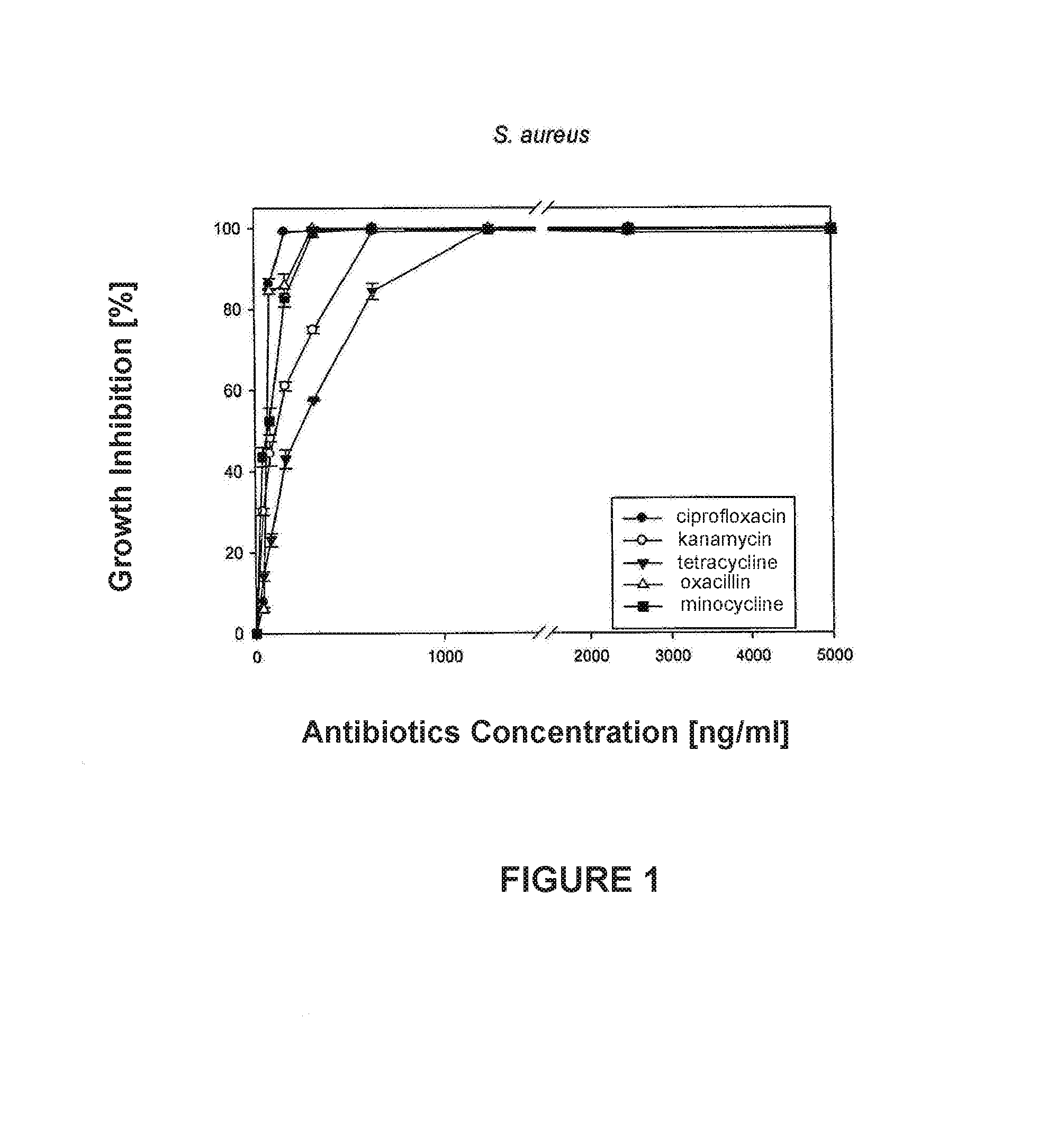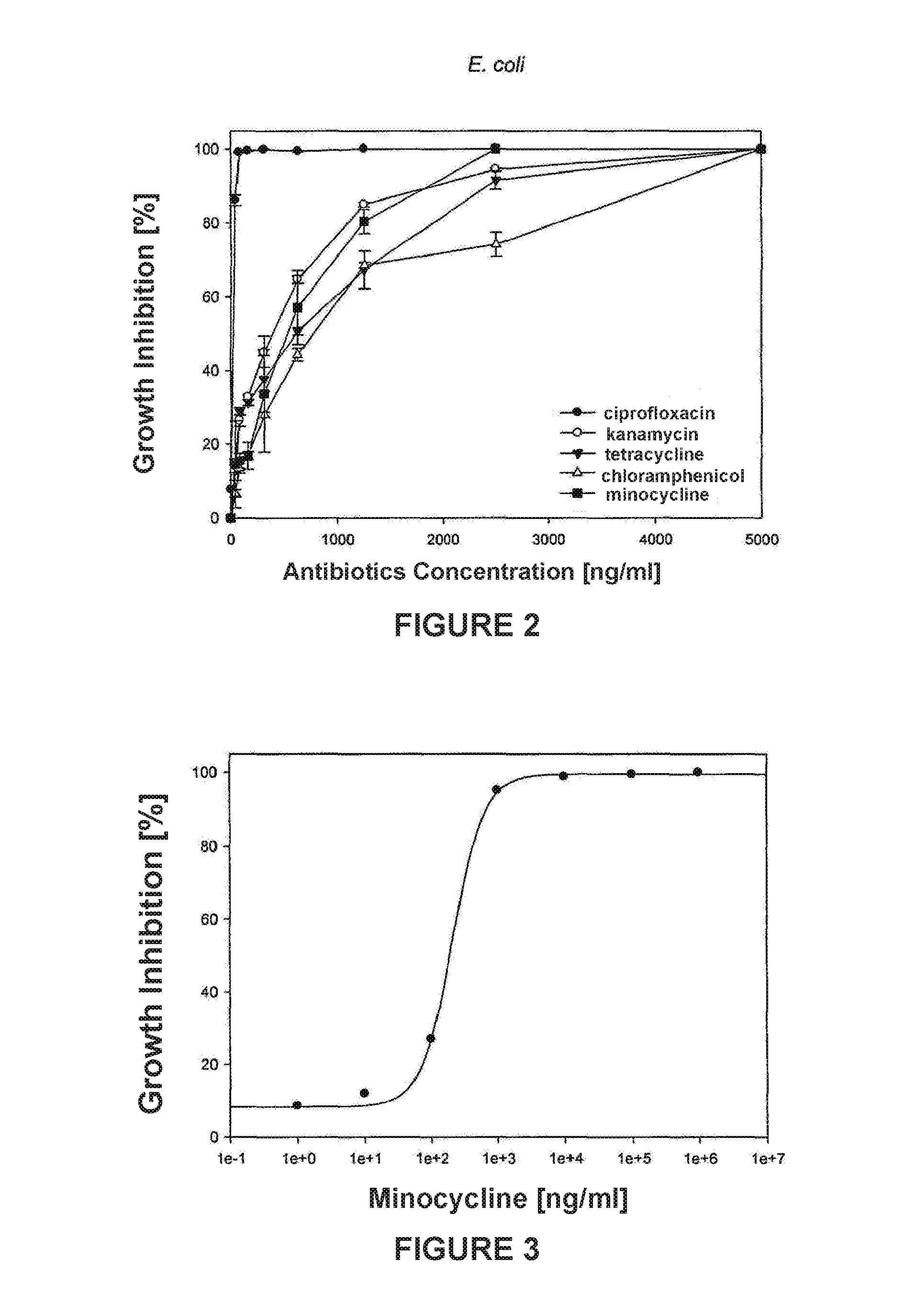Method for the microbiological determination of traces of antibiotics in low volume biological samples
a microbiological and biological sample technology, applied in the field of microbiological method for determining traces of antibiotics in low volume biological samples, can solve the problem of inability to accomplish kinetic studies of antibiotics
- Summary
- Abstract
- Description
- Claims
- Application Information
AI Technical Summary
Benefits of technology
Problems solved by technology
Method used
Image
Examples
example
[0017]Cerebrospinal fluid (CSF) collection: It was collected by transcutaneous cisternal magna puncture. Minocycline injections were performed by the same route.
[0018]Curve fitting: Four Parameter Logistic Curve (4PL) analysis was applied to minocycline antibiotic obtained from FIG. 1:
y=(max−min) / 1+(x / EC50) Λ Hillslope+min, (1)
solving for x:
x=EC50((−max+y) / (min−y)Λ(1 / Hillslope) (2)
wherein:
[0019]min=Bottom of the curve
[0020]max=Upper curve
[0021]EC50=The value of x for the curve is halfway between the minimum and maximum parameters. It is called the half-maximum effective concentration.
[0022]Hillslope=characterizes the slope of the curve at its midpoint.
[0023]In accordance to the abovementioned, FIG. 4 was generated.
[0024]Minocycline (MC), an antibiotic belonging to the family of tetracyclines, was used to carry out pharmacokinetic studies of CSF in Sprague-Dawley rats. Briefly, normal rats were injected via intra CSF an MC solution of 1 mg / mL, for subsequent sampling of CSF at tim...
PUM
| Property | Measurement | Unit |
|---|---|---|
| volume | aaaaa | aaaaa |
| volume | aaaaa | aaaaa |
| concentrations | aaaaa | aaaaa |
Abstract
Description
Claims
Application Information
 Login to View More
Login to View More - R&D
- Intellectual Property
- Life Sciences
- Materials
- Tech Scout
- Unparalleled Data Quality
- Higher Quality Content
- 60% Fewer Hallucinations
Browse by: Latest US Patents, China's latest patents, Technical Efficacy Thesaurus, Application Domain, Technology Topic, Popular Technical Reports.
© 2025 PatSnap. All rights reserved.Legal|Privacy policy|Modern Slavery Act Transparency Statement|Sitemap|About US| Contact US: help@patsnap.com



